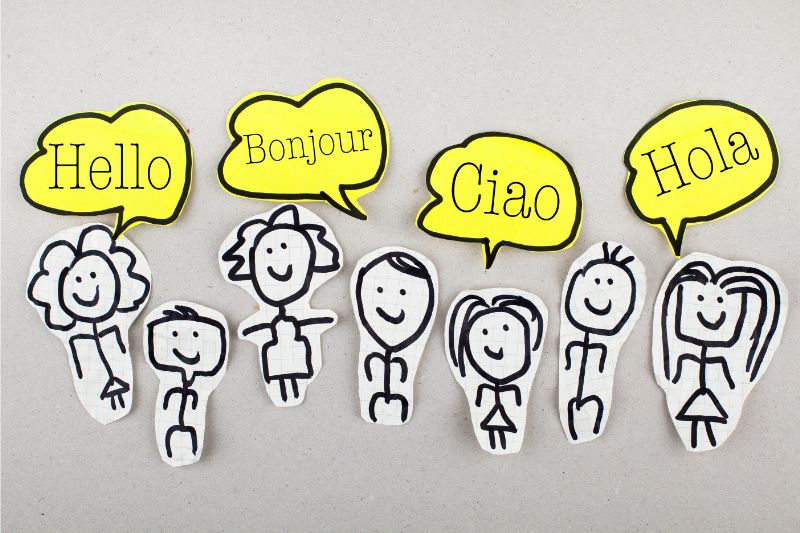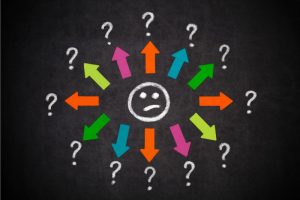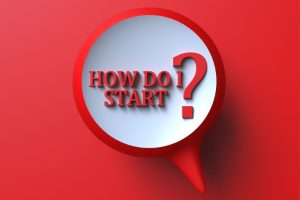You want to learn a language. Wonderful!
If you tell me, “I’d like to learn French,” that gives me one piece of information about what you’d like to do. Yet, there’s a variety of other things we must know about your desire to learn French before we can create a program that’ll teach you what you want to learn.
For instance, if you want to learn French so you can correspond with a French pen pal, your needs will greatly differ from needing to learn French so you can work at your company’s facility in Paris.

It’s like saying, “I want to get in shape.”
Does that mean you want to lose body fat, get stronger, recover from an injury, get faster, or become more flexible?
“Getting in shape” can take many forms. A good personal trainer knows how to ask the right questions to narrow your goals and needs to develop a program for you.
This post is meant to teach you how to ask yourself the right questions about how you choose to approach learning a new language. Just like that personal trainer, we can narrow your language-learning goals and give you the knowledge you need to ensure your learning program will get you where you want to go.
The important thing is that you know enough to state your goals and desires clearly. Learning a language is tough enough; you don’t want to waste time and effort going down roads that don’t lead to your destination.
Take Control of Your Language Learning Process
The topic of how to best learn new languages has been studied by experts for decades. They looked at how babies learn to speak and adults learn languages, devising all sorts of theories, techniques, and approaches they thought best. It’s fascinating reading, but you may not have the time or interest to go there.
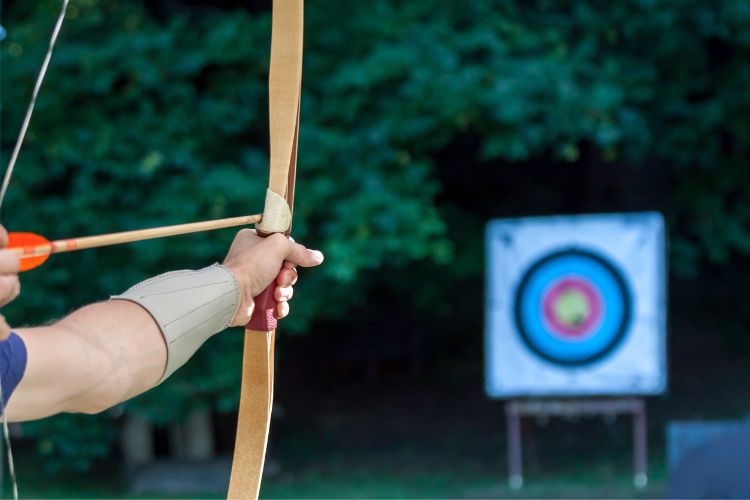
Paul Nation is one of those researchers. He’s an internationally recognized scholar in linguistics and teaching methodology.
Among the many things he studied is language course design. His work was meant for language teachers, but it can be used to design your own language learning program.
We’ve boiled down his work on developing a language curriculum to help you take control of your learning and design/look for a program that works best for your needs.
First, look at the professionally designed curriculum; then, we’ll apply their techniques to find out what you want to do.
A Language Learning Curriculum Model
Here’s a diagram of what teachers consider when creating a language-learning curriculum. They call what we’re about to do a needs analysis and environment analysis. All these factors determine how you plan your language learning. Here’s a diagram of the process. We’ll discuss how each section applies to you later in this post.
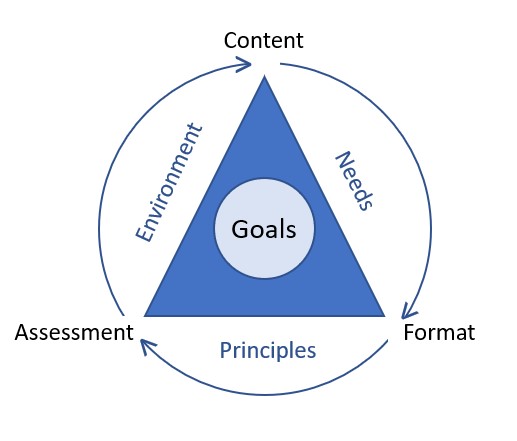
In the middle are your goals.
Surrounding them are:
- The environment: the conditions in which you learn
- The needs: how you learn best
- The principles of language learning
The outside circle is:
- The content: what you will learn
- The format: how you will learn it
- Assessment: how you will track your progress
Now, let’s do your needs and environmental analysis.
Understand Your Language Learning Goals

Your first step is to clearly understand what you want to know and accomplish by the end of the course. Setting some sort of measurable goal keeps you on track to success.
Rate each of these goals on a scale of 1–7, with 1 being very rudimentary skill and 7 being some degree of fluency.
- Understand spoken French: _____
- Speak French: _____
- Read French: _____
- Write French: _____
Jot down two or three specific things you want to do. For example, “I want to be able to speak basic phrases when I go to Paris next year” or “I want to be able to email my grandmother who lives in Lyon and doesn’t speak English.”
That’s your goal for now. Looking into the future, will that be the end of your efforts to learn French, or do you think you will want to be more fluent?
Rate your best guess about your future involvement with French from 1 to 7, with 1 being “I’m done when I reach this goal” and 7 being “I want to become fluent in French.” ______
Understand Your Learning Environment and Set Your Expectations
Now, let’s look at what will work for you. We want you to gain a realistic picture of your needs and expectations of how you learn.

Understanding what you already know is important because you don’t want to study what you already know or struggle with material that is too difficult.
How much French do you know already? Rate yourself on a scale of 1 to 7, with 1 being “I can say ‘oui,’ and that’s it,” and 7 being “I’m no longer a beginner.” ______
How much time can you realistically devote to learning this language?
Daily: _____
Weekly: _____
How long do you see yourself working on this section of your language learning? (Becoming fluent will take years; how long do you want this course to take?)
_____ months
How motivated are you? Taking a course because it’s a graduation requirement greatly differs from being able to communicate with your French grandma.
Rate yourself on a scale of 1 to 7, with 1 being “I really like the idea of learning French” and 7 being “This is something I am completely committed to doing.” ______
Jot down your main motivation(s).
How much money can you spend on this per month? $_____
How do you want to learn (regarding how the content is delivered)? Rank these, with #1 being your top choice.
_____ I like the idea of using an app. I’m unlikely to succeed unless it’s all on my phone or laptop.
_____ I need a teacher, but it can be a recorded class.
_____ I need a live teacher—in person or virtually.
_____ I like learning with other students to interact with.
What’s your favored style of learning? Rank these, with #1 being your top choice.
_____ I’m a studier. I love books and flash cards.
_____ I’m an auditory learner; I learn best by hearing the content.
_____ I’m a note-taker: writing things down and using books helps me learn.
_____ I learn best by using what I’m taught.
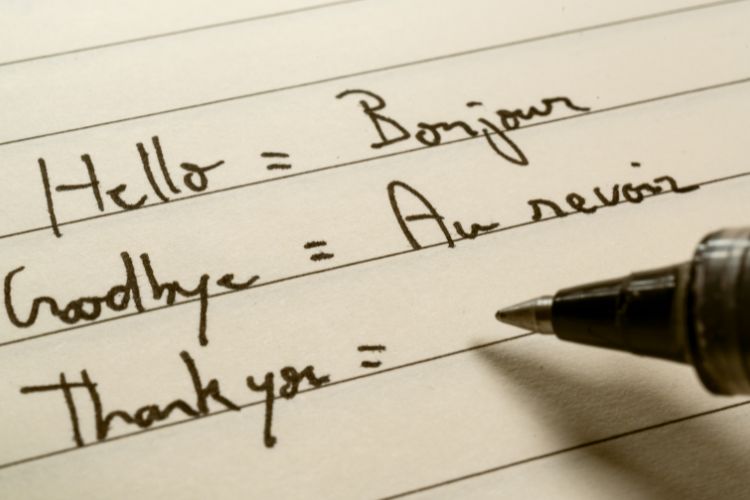
What resources are available in this language? If you want to learn French, there are more than enough resources to choose from. However, if you want to learn enough to teach a physics course in French or want to learn a more obscure language, your choices may be more limited.
* * *
Now you know where you want to go and where you’re starting from. Further, you have some idea of the time and money you have to spend and what works best for you as a student.
Now, let’s prioritize a bit. What’s most important to you about your upcoming course? Rank these, with #1 being the most important.
_____ It focuses mostly on my goal.
_____ It’s a well-balanced course in the fundamentals of French.
_____ It meets my time limitations.
_____ It meets my financial limitations.
_____ It meets my desired delivery style.
_____ It’s structured to focus on how I learn best.
All these considerations may change as you go along! You’re never stuck with a program of your own design. By taking charge of your learning, you can adjust goals, methods, and other factors so your time and effort are best spent.
Now, let’s move on to the nitty-gritty: what you learn and how you learn it.
Include the Principles of Language Curriculum
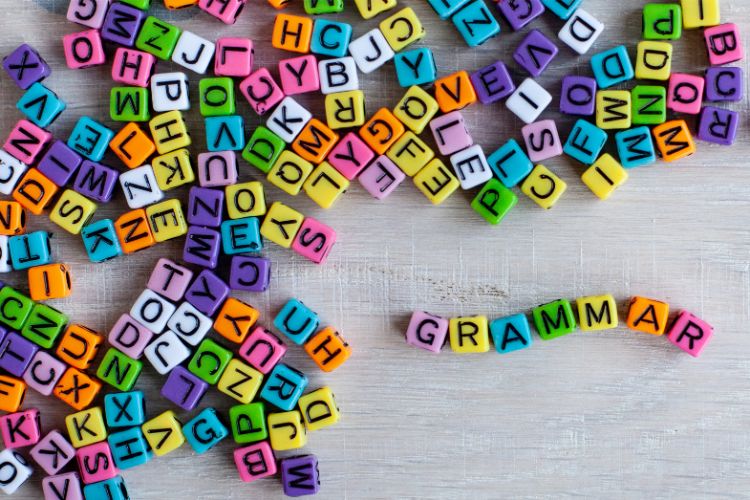
Here’s (a very basic representation of) what linguistic scholars have found about the best way to learn a language:
- We learn a language best by using it in a meaningful context (like a conversation) rather than studying it by rote (as with flashcards). This is called meaning-focused input and output. Therefore, instruction and study should make up a small part of a language course. What works is using and playing with the language.
To work toward fluency, we need a balance of what Nation called the Five Factors:
- Comprehensible input (listening and reading)
- Grammatically correct output (speaking and writing)
- Meaningful interactions
- Formal instruction (study)
- Practice and repetition
We need lots of repetition. You just can’t learn a word or phrase by encountering it once. We talk about spaced repetition in different contexts. This just means returning to the same word often enough and in enough different contexts to cement it in your brain, but not so frequently that it’s boring.

